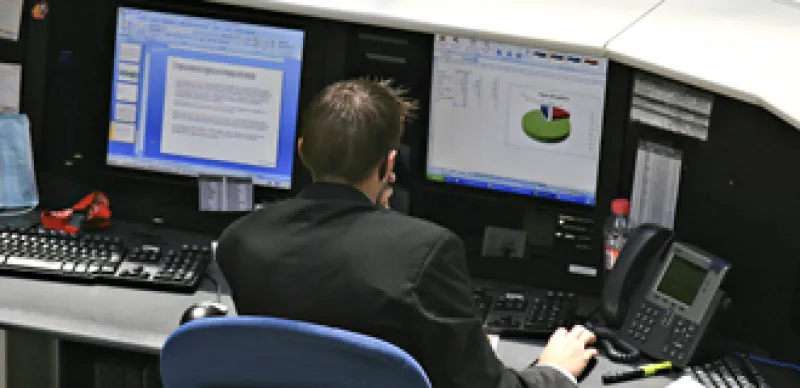In the U.S. and Europe there’s growing alarm over high frequency trading and its potential risks. High frequency traders use computer algorithms to profit from small, short-lived price discrepancies. About 15 such U.S.-based shops comprised 60 percent of average daily volume in American equities in 2009, Boston consulting firm Aite Group reports. These proprietary houses and hedge funds took some of the rap for last May’s “flash crash.”
While U.S. regulators browbeat high frequency traders, Bolsa Mexicana de Valores, the Mexican stock exchange, is reaching out to them. Last year the Mexico City–based BMV streamlined direct market access for these traders and let them house their data servers at the exchange to reduce latency. Starting this month it will route all derivative orders to the Chicago Mercantile Exchange’s Globex trading system, where high frequency traders have a strong presence.
The BMV is chasing high frequency traders for two reasons: They’re a guaranteed source of liquidity in good times, and the exchange faces pressure to grow as its global peers merge. “High frequency traders are liquidity providers at any exchange,” says group chairman and president Luis Téllez. “Mexico has the electronic capabilities to host and benefit from what they are currently doing.”
The BMV’s strategy is working: U.S. high frequency trading firms now represent about 90 percent of average daily volume on the Mexican exchange. To create its own ultrafast trading engine, which will launch in January, the BMV is working with engineers at Carnegie Mellon University and consultants who helped develop Nasdaq’s OMX platform.
But according to last fall’s report on the flash crash by the Commodity Futures Trading Commission and the Securities and Exchange Commission, courting the speedy can be risky. On May 6, 2010, a fundamental trader executed an automated $4.1 billion sell order of 75,000 futures contracts using an algorithm that kept selling rapidly even though prices were plunging. When high frequency traders and others began selling too, the Dow Jones industrial average lost almost 1,000 points before rebounding. The flash crash lasted 20 minutes, but it didn’t trigger any of the circuit breakers that exchanges use to halt trading when there are unusual market moves.
Javier Artigas, the BMV’s senior vice president of strategic planning, is unfazed. He emphasizes that the BMV uses the same circuit breakers as the New York Stock Exchange does to buffer trading errors, including the one introduced to address the flash crash: a five-minute pause after a price drop of 10 percent or more.
The exchange is also following how U.S. regulators interpret the Dodd-Frank Wall Street Reform and Consumer Protection Act, which may require hedge funds that have at least $150 million in assets to report their positions and strategies. If that happens, increased operational costs could reduce high frequency trading.
“The concern that people have about high frequency traders adding volatility to the market more than anything else is unfounded,” says Benjamin Souza, head portfolio manager of $4.1 billion Mexican pension fund Afore InverCap. “They add depth and liquidity.” Souza explains that high frequency traders’ influence is limited to the biggest names — such as Mexico’s largest phone provider, América Móvil — because they profit from inefficiencies in very liquid markets.
That may point to concentration risk. But Homero Elizondo, a risk manager at Monterrey-based Afore InverCap, says the BMV needn’t worry about a repeat of May 6. Aite Group cofounder and managing partner Sang Lee agrees. Lee says the main reason for the flash crash was that the U.S. equities market is highly fragmented, with the largest venue, NYSE Euronext, accounting for just 25 percent of trading. “But if you have a single exchange dominating the marketplace, it’s difficult to run into a situation where you don’t know why certain types of moves are happening.”
Noting the speed at which markets react, Afore InverCap’s Elizondo thinks anyone who blames high frequency traders for the flash crash has “a very narrow view of the problem that day.” Rather than focusing on trading errors, he says, regulators should consider circuit breakers that get triggered by smaller price changes in times of relative stability. “It would be very helpful to have lower triggers to prevent people from selling or buying out of irrational decisions like fear or greed.”






